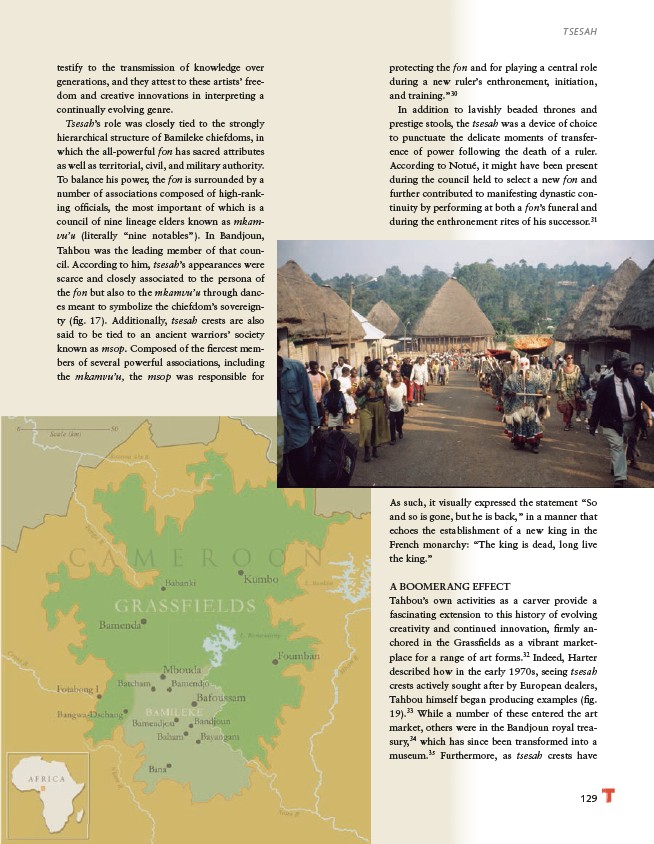
TSESAH
As such, it visually expressed the statement “So
and so is gone, but he is back,” in a manner that
echoes the establishment of a new king in the
French monarchy: “The king is dead, long live
the king.”
A BOOMERANG EFFECT
Tahbou’s own activities as a carver provide a
fascinating extension to this history of evolving
creativity and continued innovation, fi rmly anchored
in the Grassfi elds as a vibrant marketplace
for a range of art forms.32 Indeed, Harter
described how in the early 1970s, seeing tsesah
crests actively sought after by European dealers,
Tahbou himself began producing examples (fi g.
19).33 While a number of these entered the art
market, others were in the Bandjoun royal treasury,
34 which has since been transformed into a
museum.35 Furthermore, as tsesah crests have
129
testify to the transmission of knowledge over
generations, and they attest to these artists’ freedom
and creative innovations in interpreting a
continually evolving genre.
Tsesah’s role was closely tied to the strongly
hierarchical structure of Bamileke chiefdoms, in
which the all-powerful fon has sacred attributes
as well as territorial, civil, and military authority.
To balance his power, the fon is surrounded by a
number of associations composed of high-ranking
offi cials, the most important of which is a
council of nine lineage elders known as mkamvu’u
(literally “nine notables”). In Bandjoun,
Tahbou was the leading member of that council.
According to him, tsesah’s appearances were
scarce and closely associated to the persona of
the fon but also to the mkamvu’u through dances
meant to symbolize the chiefdom’s sovereignty
(fi g. 17). Additionally, tsesah crests are also
said to be tied to an ancient warriors’ society
known as msop. Composed of the fi ercest members
of several powerful associations, including
the mkamvu’u, the msop was responsible for
protecting the fon and for playing a central role
during a new ruler’s enthronement, initiation,
and training.”30
In addition to lavishly beaded thrones and
prestige stools, the tsesah was a device of choice
to punctuate the delicate moments of transference
of power following the death of a ruler.
According to Notué, it might have been present
during the council held to select a new fon and
further contributed to manifesting dynastic continuity
by performing at both a fon’s funeral and
during the enthronement rites of his successor.31